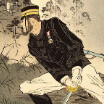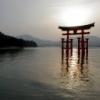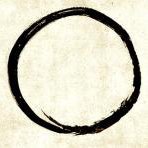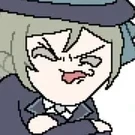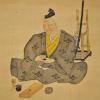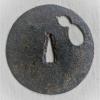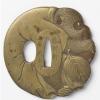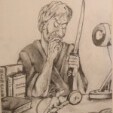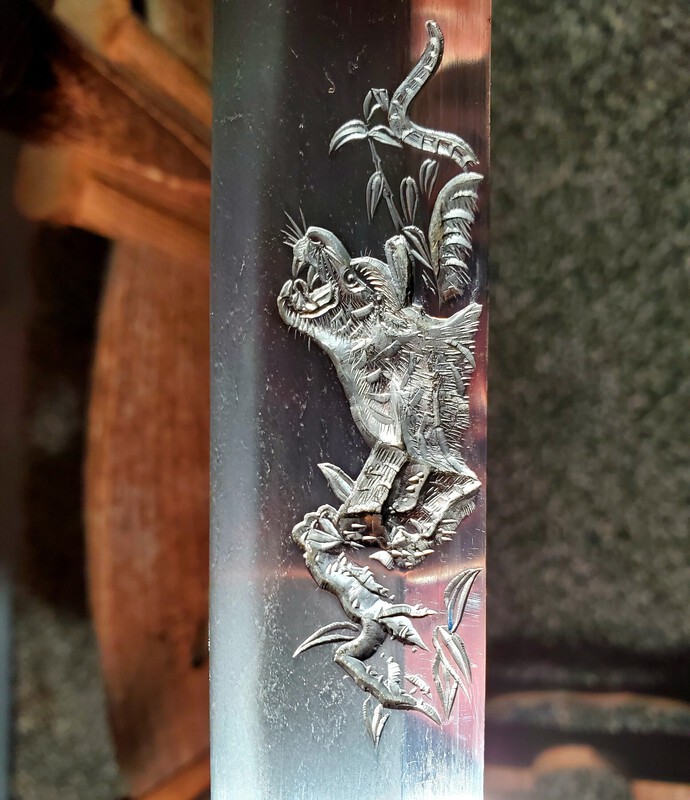Leaderboard
Popular Content
Showing content with the highest reputation on 11/06/2024 in all areas
-
5 points
-
Hi, As stated before, practicing with an antique sword is not a taboo, please watch this video for example (interesting introduction to Nihonto by the way). And Iaido is not Battodo, that is not "shopping wood", we talk about martial art (koryu or not) that need as much respect as nihonto. But as stated as well, we are not the one that could answer you. Here you will find collectors that desire among all preservation. And please don't compare a 15 years use with a 5 to 10 century preservation. If you practice for so many time, you must have a Sensei or a Soke to guide you through your desire to practice with a shinken. That's up to him that you should seek your answer. Not in a forum, as qualitative as it is (and it is!) And if you are directed toward this direction, choose a sword good to do that, some Japanese sellers indicate swords good for Iai (even antique).4 points
-
As a Koto collector who owned a sword that had been used to cut mats before, the damage is more severe then you think I had bought this sword, taken a good look at it, and only realized at home, it was covered in very small and sometimes minor scratches. But also some damage to the cutting edge, maybe 1/4 of MM. But this pained me to look at, the blade was early Koto, and extremely beautiful, even papered. Please never use these swords as a cutting instrument, it makes future collectors like me very sad and lowers the value of the blade significantly. Greetings, Lex4 points
-
4 points
-
Bit more to it than that. HOZON TOKEN 1) Edo and earlier blades with correct mei, or mumei blades on which the time period, kuni and group can be identified, may receive Hozon paper. 2) Blades that meet the criteria given above can receive Hozon paper even if they are slightly tired or have kizu, as long as those may be permissible in their appreciation. 3) For Nambokucho and earlier zaimei blades by famous smiths, re-temper can be permissible if the blade is valuable as a reference, and if the jiBa and nakago are sufficiently well preserved. However, this has to be documented in the paper. 4) Repair on jiBa is permissible, unless it significantly impairs the beauty of the blade. 5) Blades made in Meiji and Taisho periods, and those by recently deceased smiths, can receive Hozon paper only when the blade is well made, zaimei and has a ubu-nakago. 6) Blades are put to “reservation” if a decision could not easily be made on the authenticity of the mei. This also applies to mumei blades in which an attribution is difficult to make. 7) Blades with hagire may not receive Hozon paper.3 points
-
正倉院展 – The 76th Annual Exhibition of Shoso-in Treasures Ref. The 76th Annual Exhibition of Shōsō-in Treasures | 正倉院展 According to the exhibits list, the two swords of this year are 黒作大刀 (Kurozukuri no tachi) and 無荘刀 (Musoto). Ref. 202410_shosoin_list0919-2.pdf 9. 黒作大刀 第13号 – Tachi with black-lacquered mounting, No. 13 Ref. |Tachi| sword with black-lacquered mounting, No. 13. - Shosoin 10. 無荘刀 – Sword without fittings (There are 23 such swords in Shoso-in.)3 points
-
Its really bad. Recent (past 150 years) signature with substandard execution. Tremendous damage. Modern tsuka of low quality.3 points
-
This will go against the grain, but here is what I have seen in Japan: Some will use old blades (Nosyudo, the iaito maker, used to sell some, likely for that purpose, but they were not museum or collection level blades), but old iron tsuba are more common. Nowadays, uchiko is only recommended for heavy oxidation, which can occur during a humid summer; otherwise, alcohol with a fine weave cloth and oil is what many do. For what it's worth, after almost ten years praticing with a shinken, the damage is: scratches on the kissaki, a millimeter broken off the kissaki from hitting the floor (doing the kata tora no issoku), and oxidation on the mune, especially near the habaki (from touching and exhaling during cutting). The main points against using an antique blade are: 1. The shape may not be quite conducive to iaido practice, i.e. the sori and kissaki shape may not be quite adapted to nukitsuke; 2. The blade's history being unknown (smith sometimes also unknown), it is unclear if the blade is safe to practice with. There may be defects and some prior deformation that make it somewhat "fragile". (3. The blade is too short for your height, and thus does not allow for "proper" technique to be practiced.)3 points
-
The problem here is that sooner or later an "art" sword will be ruined by someone who lacks the knowledge and better judgment necessary not to proceed. This is not unlike the issue with amateur polishers. Desire is the cause of suffering.3 points
-
It is very interesting to compare my different interests on this point. The most relevant comparison is violins. In fact, there is a violin equivalent of NMB--maestronet.com--a similar forum devoted to violins. While violins have only existed for about 500 years, the value of the finest examples far exceeds any nihonto in existence. Arguably, the cultural significance of either item is about the same. The difference is that no one tells a violinist with their exquisite 1706 Stradivari that they should put it in a case and never play music on it. Even though playing on a violin can cause damage, there are highly-skilled luthiers who can repair these instruments and keep them alive. There are some fabulous old violins in museums, but even then they are sometimes lent to great players to perform on (https://www.youtube....EBA5EA4076B&index=34). No one would say to a violinist that they should only play violins made recently; in fact my Magnus Anton Fichtl from 1775 gets a couple of hours of workout every day. While iaido, with the repeated drawing and sheathing, can damage a blade, I believe that even suburi would be considered out-of-line here. I suspect the difference is that the actual intended use of nihonto, which is to say life-taking and life-giving, is no longer a living tradition. Still, I would urge you all to give Nicholas a bit of a break here. He makes a reasonable inquiry.3 points
-
3 points
-
You just summed up how I feel about this, and you said it better than I was able to... Thanks 🙏2 points
-
So then the paper that states they are worthy of preservation means they are not worthy of preservation? Do tell…2 points
-
2 points
-
Just a FYI that rarely are the mounts (koshirae) original to the sword. The wood and ray skin and other natural materials degrade over time. Real, old, collectible koshirae are their own set of serious collectors items and have their own grading papers to accompany them. id pass on this blade. The mune looks very badly chewed up with bit splits and there are lots of pits up and down the length of the blade. For that much money, I believe you could pick up a very nice koto blade with no flaws or defects without too much trouble.2 points
-
It's not militaria or military. It's an antique civilian sword. And I suspect you can do faaar better from sellers inside Australia, there are plenty of swords available from collectors and dealers there for less.2 points
-
Muromachi or not, this has a lot of ware which are concerningly large. The mei looks spurious. The sword is so over-oiled that you can't really see any hada. The mounts are very recently restored. You can probably find better. What are they asking? I suppose that is the clincher.2 points
-
See, that is very insightful, and the kind of views I had hoped this kind of debate would foster. Never thought about it this way. Thank you.2 points
-
The lattice is depicted fractional to allude to transientness. Florian2 points
-
John, you got me scared that I messed this up, so I searched the forum for swords where both the Wakase patent ishizuke and ito are visible and found a mix of tsumami-maki and hineri-maki on posted examples. From the small sample size, the tsumami-maki seems to be more common on kai gunto, and the hineri-maki more common on army swords. I noticed that most of the army swords have what Ohmura calls the "Kashira-Kakemaki" style of binding stop. All I know about how my sword was originally wrapped is that the menuki placement was standard (you could see where they were) and that it was not kashira-kakemaki style because there was no hole through the tsuka. So I'm reassured that my restoration is at least "historically plausible." Tsumami-maki #1, #2, #3, #4, Hineri-maki #1, #2, #3, #4, #5, #6, #7 High-end katate-maki outlier2 points
-
Two perspectives, I think. Some would think they are just the caretakers of this era, therefore their job is to preserve the blade in the best condition for later peoples. Others would think nihonto is an art but also a weapon, limiting its usage only as an art would be bit of waste. I personally have always thought nihonto as an art AND a weapon, well due to my historical reasons, so I do understand your point. If nihonto is only seen as an art shouldn't fancy shinto or shinshinto have much more value then how they are seen as then now? A weapon, that was made to harm people. An icon, that was made to show gratitude and promise for another. An art, that was made to study and appreciate its form. And a pride, that was made to show one swordsmith's lifetime earned skill. These are all shades of nihonto. If one is going to use it properly(not as a some kind of a joke) I'd say sure why not? The choice is yours. Just remember koto is likely to be weaker than nowaday's steel blades.2 points
-
Hit the nail on the head here @Franco D! These swords are here because people didn't fall to their desires. The swords weren't buried with their past owners, they weren't mistreated by their descendants. They were stored, respected, and only when needed, maintained. It is frankly a small miracle we are even able to acquire them - and I suspect there will come a time where they are once again more widely revered and valued. Even if it is a bit more boring for us... I don't need to practice with my nihonto, so I wont. After all, I want at least one of my swords to survive another 500 years, and travel the stars as humanity start to settle them2 points
-
If this is a repetitive question here I understand there might be some built up frustration coming out here. Otherwise I think the question was asked in a good manner. And from someone who has spent a considerable amount of his life developing his sword skills. There are a lot of people out there who will ask nobody before they use Nihonto for backyard cutting until the sword looks like an old rusty saw. I myself have cut tatami with a koto blade, but that was in Japan and not on my own initiative. I wouldn't dream of doing it outside of Japan. My position is that we have to keep in mind that we are only the caretakers of these historic swords for a while before they continue down the history. Our lives are just a blip in the history of the sword, and if every blip wants a piece of the sword, it won't last very long. For each generation of users, the finite pool of antique katans gets even smaller. In the future, prestine katanas will be very rare. By using this katana, you are not doing your best to preserve it for future generations. Previous owners throughout history did not take this well care of their swords and pass it on until it reached us, so we can start putting miles on them. There is something beutifully humble about viewing yourself as the caretaker and not the end user of a sword. I'd still say that after 15 years of Iai you probably have the skills to not do much damage, but I'd rather not anyway. For the Japanese the blades serve ritualistic and even religious purposes. They are believed to expel evil and protect the house from bad spirits. Maybe adopting a similar mindset and start viewing it as your lucky charm will make it feel more like it has a purpose?2 points
-
I have been collecting nihonto for over 20 years, and I've always been one to transfer them from their shirosaya to the koshirae once I receive them, and I never keep them oiled either, with no ill effect. Some of my swords have been in their koshirae for over 20 years on my sword rack, unoiled, without developing any rust. And until this year, I lived in a city where the humidity in my house was about 50%. I prefer to keep my swords in their koshirae because I like the feel of how a sword was intended to be handled, in koshirae. And also, I have an unfounded phobia of my hand slipping on the shirosaya handle, and my hand getting cut, so a tsuba is always nice to have. So now I have a huge stack of shirosaya over the years that I really need to get sorted and tagged, ha ha. Maybe it's also because most of my swords are TH and below, and not Juyo or TJ, so I'm not as concerned with keeping them in absolutely pristine condition.2 points
-
G'day guys, Dragons are common subjects for horimono. There are many different styles out there. They pop up on this forum from time to time and people will often comment that this example is good, this example not so good and so on. If you are doing research on them it is difficult to find many examples in one place. I have discovered that it is also very difficult to take a good photo of one. I thought it might be a good idea to dedicate a thread to them. I will start it with this example by Gassan Sadakatsu dated 1920. Cheers, Bryce1 point
-
The shirasaya is designed to have a much better seal, and therefore moisture barrier.1 point
-
I may drift off into the mystical here... but to me there is a significant difference between an object which has been used with respect for centuries, and one which has been stored in a display case. There's a deep energy which is imparted with the combination of use, care and time, which differentiates certain objects. I have some antique tools which are now both valuable and irreplacable, but which I continue to use - really as an act of respect for the maker and past users. Even certain sorts of wear can be part of that energy. Obviously, I couldn't recommend using a nihonto for it's original intended use :-)... but being used and cherished by a skilled iaito practitioner to me would enhance the nihonto, even if there are some nearly microscopic scratches caused by drawing. I also agree that there is something totally different, in an important way, about the experience of practicing with a centuries old nihonto, playing a centuries old violin, or using a very old handmade tool, even if a new one is objectively better. You become a link in a chain of skill and, hopefully not overstating things, love. Personally I think using a koto nihonto for iaito, with enormous respect and reverence, will enhance the blade. Told you it was going to drift into the mystical :-)1 point
-
Unless you're living in Japan you shouldn't follow the Japanese example. It's totally different circumstances due to their laws. If you want to cut tatami or practice Iai with a Shinken inside Japan, you're bound to use Nihonto. For many, an old sword will be more affordable than a newly made sword. I've personally talked to Japanese Togishi who were totally unaware that we can buy shinken from China for as low as 100-200 USD. Whenever you read anything from the Japanese you have to keep in mind that it's likely said from the viewpoint of having little to no alternative, and most of them are unaware that we have better alternatives. If they had a choice they would likely do things differently.1 point
-
While in Nara today, we visited the Nara National Musuem where they are doing their Shōsō-in (Nara Treasure Vault) exhibit. They had 2 swords on display, a “tachi” and a “sword blade”. Unfortunately photos were expressly forbidden for these 2 swords and they were being vigilant about that rule on these and other exhibits. I wasn’t able to get pictures. The “sword blade” shown was on display for the first time ever since it went into the vault in the 9th century. I can’t find any pictures about either of these swords on any of the Shoso-in pages. I’ll try to paint a picture the best I can with my newbie skills. Both the tachi and the sword blade were straight swords and were incredibly thick with super low shinogi or yokote. They had a flat back (kaku-mune) and were nearly 1cm thick. The lighting wasn’t good on the short sword blade but they both seems to have a mokume-hada type pattern and a chu-suguha hamon. The “kissaki” portion had a rounded fukura type shape but no yokote. I thought I could see some Utsuri on the tachi but the lighting was kind of dim and all of the Japanese people at the museum (our small group of 3 were the only non-Japanese there) were all looking at me funky crouching down low trying to get the right angle to see if utsuri was present! The last major thing I noticed was that the nakago on both blades had a hamachi and munemachi that were nearly 1cm. The mihaba on both blades was ~4cm+ by my estimations through the glass. The taper was also very minor and both blades were still ~3cm at the end at the sakihaba. I was able to get pictures of some wonderful Buddhist carvings and statues as well as some other ancient artifacts where photos were allowed but the big items (glass and gold plate, emperors armrest, and a mirror box) were prohibited and I didn’t want to disrespect these amazing artifacts. if anyone is near the Nara area before the 11th, I’d highly recommend the museum to see some swords that may never see the light of day again in our lives.1 point
-
Excellent! What a difference. You gave your Gunto new life.1 point
-
Finally, reluctantly, moving house. 30+ years of clutter needs to be junked or hauled. The long Yari presents a problem. I brought it home in the old station wagon, which we sold. Now I have to carry it in (half out of) the down-sized ‘one-box’ car. (No roof-rack.) Law here says anything over-reaching must have a red warning cloth attached. Might take out a few cyclists on the way tomorrow. And this, ladies and gentlemen is why so many originally long Yari get cut down…1 point
-
Artistically very satisfying composition. Perhaps the owner felt happier filling in the nakago ana, knowing it would never again be fitted to a sword, preferring a gold centerpiece over a sharp-edged opening.1 point
-
1 point
-
1 point
-
Sensei of this school practice Battodo with shinto swords (click on battodo) http://eej.free.fr/1 point
-
I came into a large collection all at once, and I had one blade in poor shape (the notes that came with it did say this was a project blade). I made a joke about turning it into the best machete around in a post on here a bit ago but am glad I did not. I took the advice of members here and what was once a rusty piece has come a long way with just my patience and basic cleaning advice from members. At first, I had similar feelings as you, that it would be honorable to put it back in use. Now that I have been studying and will call myself officially a novice collector, my feelings have changed and agree they should be preserved. I have heard there are some decent options out there if you do want to upgrade your practice blade for cutting, even possibly a tamahagane blade made more recently. This is only something I have read about, but what I have heard is lesser-known smiths sometimes make extra blades beyond what they are legally able to produce each month just to survive. To me it sounds like your blade in question may be better off putting preservation energy into it. You mentioned you basically had a new koshirae made which is not cheap as we all know, what about getting a new polish on this blade? In the end for me, I chose to preserve as once you damage it, there is no going back. I look like I am ending up with a nice Mino-Den wakazashi and am happy with my decision. Hope this helps. Jason1 point
-
1 point
-
You are misinformed on this point. In blind tests with modern violins and fabulous old Cremonese violins, generally the new instruments win the comparisons. My bow, made by a major living archetier, is the equal or better of any old bow. Some old violins are over-repaired and too rickety for performance, although their sound/playability is not a factor in their value. People like old violins much like they like old swords. Time gives them soul, whatever that is. But in a practical sense there is no difference, and I would say that, without question, playing an old violin is no disrespect to it. I believe that it's only that playing a violin is very much a living tradition, while beheading your enemies is not.1 point
-
For what it's worth, I have been practicing iaïdo with a steel blade for almost 15 years, stored of course in its koshirae, and it's absolutely like new... It's always oiled and taken care of since I use it weekly for training though. Also I have read that some folks here do not even oil their blades. I guess it really depends on how bad humidity is in your country/area ? 🤔 So I don't really understand why koshirae would be worse than shirasaya? (genuinely asking!)1 point
-
I think it looks much better with the new patina, also it looks more "smoth", great work !1 point
-
I finally put the finishing touches on my display. It serves as both a display and a safe, which is close to air tight; the glass is clamped to the frame via magnets so it is removeable. The inside is lined with Aspen, and the fabric is vintage Japanese silk. I installed the light bar and a hygrometer. I also carved katanakake inserts for storing in shirasaya in the summer months when I'm away.1 point
-
Beautifull and a very nice tsuba to enter in any collection... congratulations1 point
-
1 point
-
1 point
-
Fantastic contributions guys. There is some beautiful work on display on this thread now, but there must be plenty more out there. Cheers, Bryce1 point
-
I agree. Besides the higher grade gendai swordsmiths (e.g. Sadakatsu, Shigetsugu, etc), I think at least the mass production operation in Seki must have had some artisans helping them (e.g. Kawamura Kanenaga was a skilled engraver). I have seen a disproportionate amount of the Seki-made showato with horimono on blades mounted in the lower grade tachi koshirae. Here is a nicer horimono of a dragon surrounding Fudo Myo-o on a blade by Seki Kanetoki that I once owned, and which has been discussed elsewhere on the forum before.1 point
-
Hello, I always thought a little about Japan because with the practice of martial arts. Fascinated by katanas for a long time, I finally decided to try to move forward, understand and learn. I also attach great importance to koshirae But also by the way trying to pratice tsukamaki and sayamaki And finally the iaido is also a good way to connect to the katanas.....(with iaitos ) looking forward to discussing, discovering and learning with you all.1 point
-
1 point
-
Well, let me bring a bit of an off beat horimono example with my only Dragon which has a bit of an artistic depiction and isn't considered very high quality work. Most of the dragon is supposed to be hidden by clouds and the horimono actually goes over the mune and continues on the other side of the blade but for some reason I can't find a photo of that on my phone but you can see it in the video link. This blade's horimono are ato-bori most likely modern horimono and there's also a tiger horimono lower down on the blade therefore I've dubbed this blade crouching tiger hidden dragon. Then here's a video I took of the blade: https://youtu.be/3tn...?si=FHb1GcFV10B-A2C51 point
-
Initial search on Wikipedia Page: "The Rising Sun Flag (旭日旗, Kyokujitsu-ki) is a Japanese flag that consists of a red disc and sixteen red rays emanating from the disc.[1] Like the Japanese national flag, the Rising Sun Flag symbolizes the sun. The flag was originally used by feudal warlords in Japan during the Edo period (1603–1868 CE).[2] On May 15, 1870, as a policy of the Meiji government, it was adopted as the war flag of the Imperial Japanese Army, and on October 7, 1889, it was adopted as the naval ensign of the Imperial Japanese Navy.[3]" "The flag of Japan and the symbolism of the rising Sun has held symbolic meaning in Japan since the Asuka period (538–710 CE). The Japanese archipelago is east of the Asian mainland, and is thus where the Sun "rises". In 607 CE, an official correspondence that began with "from the Emperor of the rising sun" was sent to Chinese Emperor Yang of Sui.[8] Japan is often referred to as "the land of the rising sun".[9] In the 12th century work The Tale of the Heike, it was written that different samurai carried drawings of the Sun on their fans.[10] The Japanese word for Japan is 日本, which is pronounced 'Nihon' or 'Nippon', and literally means "the origin of the sun". The character nichi (日) means "sun" or "day"; hon (本) means "base" or "origin".[11] The compound therefore means "origin of the sun" and is the source of the popular Western epithet "Land of the Rising Sun".[12] The red disc symbolizes the Sun and the red lines are light rays shining from the rising sun." "The Rising Sun Flag was historically used by the daimyō (大名) and Japan's military, particularly the Imperial Japanese Army and the Imperial Japanese Navy. The ensign, known in Japanese as the Jyūrokujō-Kyokujitsu-ki (十六条旭日旗), was first adopted as the war flag on May 15, 1870, and was used until the end of World War II in 1945. It was re-adopted on June 30, 1954, and is now used by the Japan Maritime Self-Defense Force (JMSDF). The Japan Self-Defense Forces (JSDF) and Japan Ground Self-Defense Force (JGSDF) use a variation of the Rising Sun Flag with red, white and gold colors.[20]" Haven't seen anything yet about sword use.1 point
This leaderboard is set to Johannesburg/GMT+02:00



